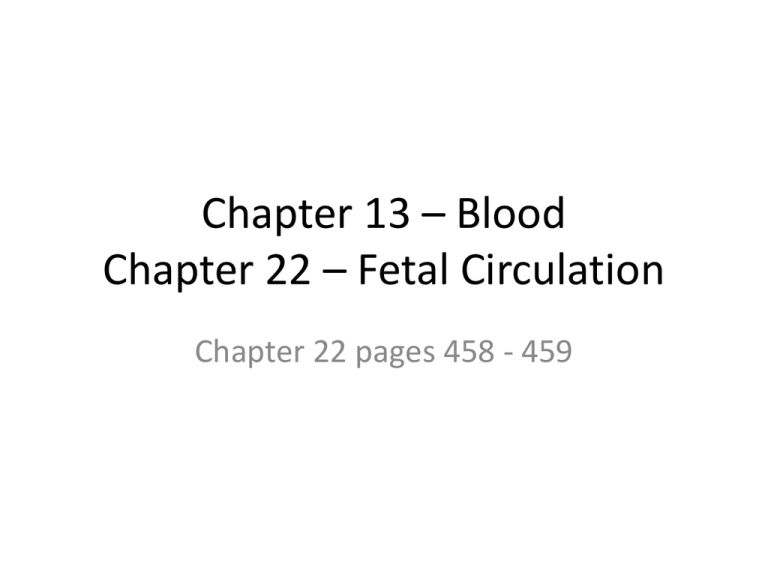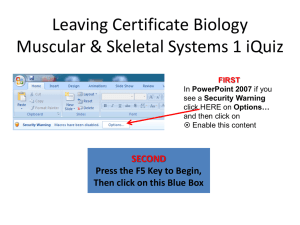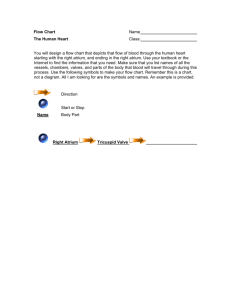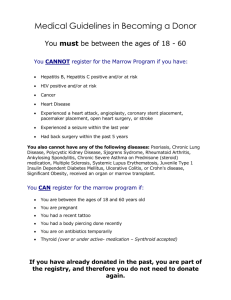Chapter 13 * Blood Chapter 22 * Fetal Circulation - Biology12-Lum
advertisement

Chapter 13 – Blood Chapter 22 – Fetal Circulation Chapter 22 pages 458 - 459 Blood • Blood is made up of two parts 1. Formed Elements • • • Red blood cells White blood cells Platelets 2. Plasma Formed Elements • Red Blood Cells – Also called erythrocytes – No nucleus – Made in the Marrow of Bones (the middle of bones) – Contains the protein Hemoglobin. This allows the cell to carry oxygen. – If arterial blood is carrying low amounts of oxygen then the kidney produces a hormone called erythropoietin. This tells the body to produce more red blood cells Red Blood Cells •Double Concave •No nucleus •Protein Hemoglobin •Made in Bone Marrow White Blood Cells • • • • Called Leukocytes Many different types of white blood cells Made in the marrow of bones Use a combination of special proteins, enzymes, and phagocytosis to kill infections Platelets • • • • Also called Thrombocytes Made in the Marrow of bones Involved with blood clotting No Nucleus Platelet No Nucleus Smaller than RBC Forms Blood Clots Where do blood cells come from • There are a type of stem cell found in the marrow of bones • These stem cells can create any type of blood cell including – Platelets – Red Blood cells – All types of White blood cells • Page 251 Plasma • • • • • • Mostly made up of water Transports dissolved gases CO2, O2 Transports nutrients Amino acids, glucose Transports wastes Urea, Uric Acid Transports hormones Insulin, epinephrine Has Plasma Proteins – Fibrinogen, prothrombin These proteins help create blood clots Capillary Exchange • On the arterial end of capillaries the blood pressure pushing into cells is greater than the osmotic pressure pushing out of cells. – The result is that materials move into cells • On the Venous end of capillaries the blood pressure pushing into cells is lesser than the osmotic pressure pushing out of cells. – The result is that materials move out of cells Review • Page 260 -261 • Testing yourself – Questions 1- 12 Blood Circulation in a Fetus • A fetus does not use its lungs for gas exchange – Instead it relies on the mother for gas exchange • The fetus has a whole in the heart that connects the right atrium to the left atrium called the oval opening – Most of the blood coming into the right atrium goes to the left atrium • Any blood that goes into the Right Ventricle goes up through the pulmonary trunk and is diverted and enters the aorta via the arterial duct • The Fetus does its gas and nutrient exchange through the placenta. • Oxygenated blood going to the fetus heart goes through the umbilical vein • The umbilical vein enters the liver and then joins with the venous duct, which then enters the heart via the inferior vena cava • When blood leaves the heart it goes to the body and deoxygenated blood goes back to the placenta through the umbilical artery




